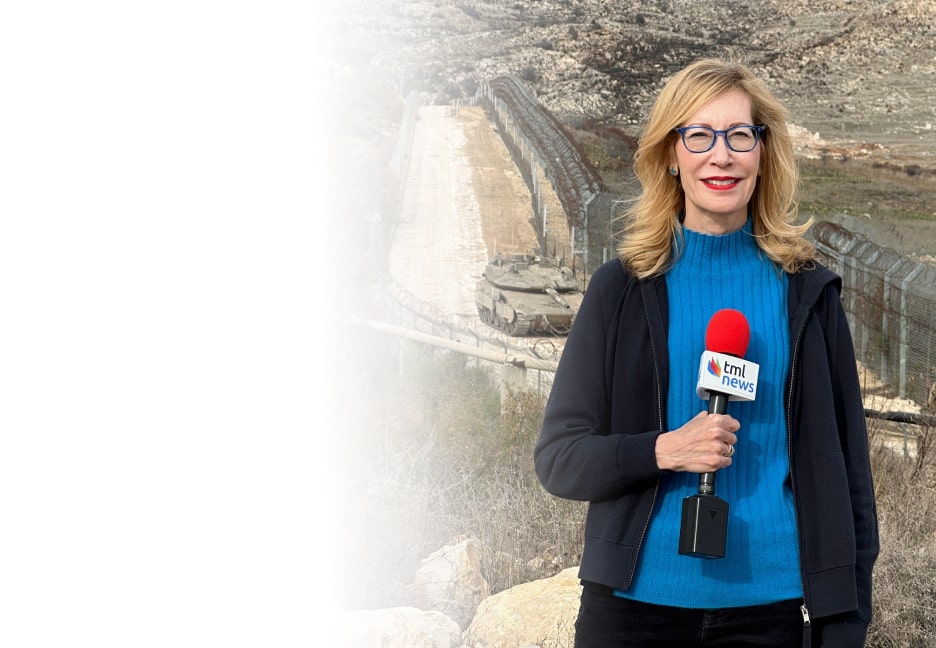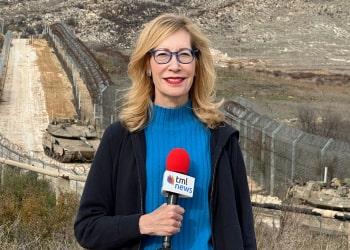Middle East diplomacy is no kids’ game. At least that’s what one would think.
But the US State Department is set to help 2,700 students in the United States, Israel, the United Arab Emirates and Bahrain engage in a virtual student exchange program centered on the development and creation of social impact video games. The Game Exchange program is set to start this September and run for two-and-a-half years, allowing for four cycles of students.
Game Exchange is being led by the New York-based nonprofit Games for Change, also known as G4C, whose mission is to support the creation of video games with a social message.
“We’ve been developing a relationship with the Department of State over the last few months. They’ve begun to recognize how games can be used for diplomacy, Games for Change President Susanna Pollack told The Media Line.
“We ran a program for Ukrainian game developers on social impact games a few months ago and we were made aware of this opportunity to create a virtual exchange program and use games as a platform to bring young people together and design games around social impact issues,” she said.
The State Department issued a grant to the Stevens Initiative to administer the program. The Stevens Initiative, part of the Aspen Institute and named for late US Ambassador J. Christopher Stevens, is a public-private partnership funded by the governments of the US, Morocco and the UAE, and the Bezos Family Foundation. Its mission is to prepare young people in the US, Middle East and North Africa for global leadership and career readiness by growing and enhancing the field of virtual exchange.
“We’ve been teaching young people how to make social impact games for the past six years. What’s new about this program is that we are now for the first time going to add to that learning opportunity and actually have young people from these different countries come together and collaborate on making games around social impact issues. So, it’s a great opportunity to build on what we know is an effective tool for learning and create this cross-cultural collaborative process that brings these students together,” said Pollack.
The Israeli component will be run out of the American embassy in Jerusalem.
“US Embassy Jerusalem is excited to be included in the State Department’s grant to Games for Change,” Lisa Wishman, director of the American Center Jerusalem, told The Media Line. The center is a section of the embassy’s Office of Public Affairs, serving as an educational and cultural center aimed at the Israeli public.
“Implementation of this specific project will begin this fall, but we have long worked with youth using gaming as a tool for peace building. We also use gaming programs to help young people from diverse backgrounds develop the skills they need to participate in a 21st century economy. They learn how to create the games they want to play and how to envision themselves pursuing careers in science and technology,” she said.
This holiday season, give to:
Truth and understanding
The Media Line's intrepid correspondents are in Israel, Gaza, Lebanon, Syria and Pakistan providing first-person reporting.
They all said they cover it.
We see it.
We report with just one agenda: the truth.


The Games for Change program will allow us to continue supporting young people as they build new relationships throughout the region to use gaming as a tool for promoting greater tolerance and peaceful coexistence
It may not have been what the framers of the Abraham Accords had in mind, but the project is a byproduct of the normalization agreements, nevertheless.
“That’s always a great place to start, where there’s an ecosystem that can support a program like this. And we found that in all three countries that there was an infrastructure, whether it was government- or state-supported or through an educational system or tech entrepreneurship, that each of the countries has the right partners in place that allowed us to build a program like this to reach those young students,” said Pollack.
“So, in Israel, we’re actually working with two universities: one [the Shenkar College of Engineering, Design and Art] that has a game design program and technology programs, and another [Beit Berl College] that has educational training for teachers. And between the two organizations, we were able to recruit the teachers to participate and support the program through a network of mentors and volunteers from the surrounding ecosystem. And in other countries like Bahrain and the UAE, we’re working with government entities or quasi-government entities that are also looking to use new technologies to provide opportunities to students and game design that is appealing as a way to teach STEM education and meet kids where they are to achieve that,” said Pollack.
Students for the program will be drawn from classrooms at schools that opt in to participate. There is also an open enrollment opportunity for students who hear about the program independently. But it mostly will start with buy-in by a school or a teacher, who will then offer the program within their curriculum and existing course. Pollack said it has been her experience, ironically, that it is humanities teachers who are interested in Games for Change, rather than computer, tech and coding instructors.
She called the program “the opportunity to get into an issue and have a creative, project-based learning opportunity for a young person that’s tied to something they’re passionate about, like games, that is a great vehicle. So yes, some kids may be involved because they like computer science and they want to learn more coding, and other kids may be involved because they’re excited about the issue that they’re going to make a game about, because that’s a big part of what this program is: that kids have to make a game about an important social issue.”
While the four countries involved in the program are all political allies, they are very different culturally. Games for Change decided on neutral, noncontroversial, palatable topics for game development for Game Exchange, opting to make games about the 17 United Nations Sustainable Development Goals, which provides a range of issues that are of global importance and which kids can identify with, and issues through which dialogue can be created.
But making engaging video games based on topics like poverty and climate change can be a challenge.
“Well, there are a number of different ways that one can integrate a social event impact topic or theme. But think about how games can be a story or a platform for storytelling. Imagine role-playing games, where you are able to step inside the shoes of somebody who is experiencing poverty in their life and you give that person a sense of agency to help problem-solve,” said Pollack.
The American Embassy in Jerusalem already has experience in projects of this nature and will be building on that in Game Exchange.
“Embassy Public Affairs previously gave a grant to a local organization called Games for Peace for a similar program involving Jewish and Arab middle school students, who played Minecraft together and collaborated in designing and creating new worlds in an interactive format,” said Wishman.
Through another embassy-supported project at IDC Herzliya, students from multiple disciplines learned the basics of augmented and virtual reality and participated in a full-day ‘XR for Peace’ ideathon to find innovative approaches to reduce conflict and promote mutual understanding through virtual reality experiences, according to Wishman. Meanwhile, the embassy has plans to launch a new immersive virtual reality experience this year at the American Center Jerusalem which will allow students to participate in key moments in US history, she said.
“The Games for Change program will allow us to continue supporting young people as they build new relationships throughout the region to use gaming as a tool for promoting greater tolerance and peaceful coexistence,” Wishman said.
With the majority of funding secured, governments and educational institutions on board, and a curriculum largely in place, a few minor hurdles remain, considering that conversations between students will all be remote, they don’t speak the same language, and the US and the Middle East are on different ends of the world.
“It’s complicated, right? We have a nine-hour time difference at best. So, we are going to have a combination of synchronous and asynchronous learning opportunities,” said Pollack.
“Yes, the kids will be getting together a couple of times in person and in Zoom meetings using different collaboration platforms. And then they’re going to be able to communicate with each other asynchronously by sending videos to each other, reviewing each other’s work, collaborating on game design platforms, where you actually can go in and change code regardless of where they are. So, we are going to use a number of different methods in which to give the kids an opportunity to exchange dialogue with one another,” she said.
The Abraham Accords brought together an alliance against Iran, a new trade and tourism exchange and a rejuvenation of Jewish life in the Middle East unthinkable to most less than a year ago. Now, the kids get to have their fun, too.